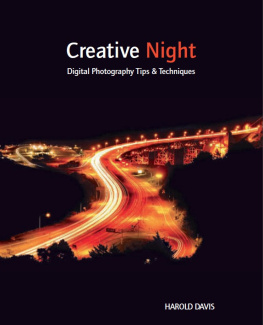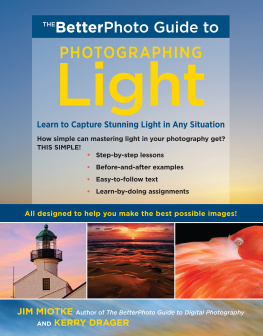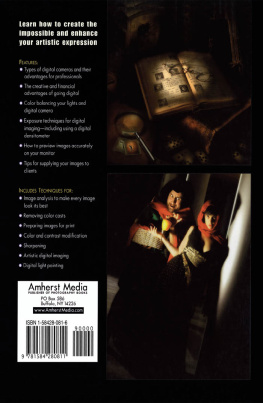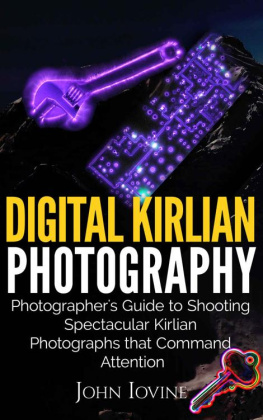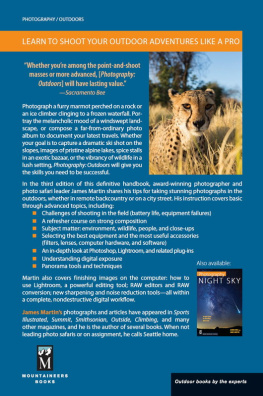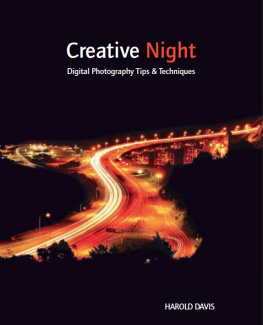Photography
NIGHT SKY

Photography
NIGHT SKY
A Field Guide for Shooting After Dark
JENNIFER WU AND JAMES MARTIN

TO YOU, PHOTOGRAPHERS OF THE NIGHT

 | Mountaineers Books is the publishing division of The Mountaineers, an organization founded in 1906 and dedicated to the exploration, preservation, and enjoyment of outdoor and wilderness areas.
1001 SW Klickitat Way, Suite 201 Seattle, WA 98134 800.553.4453 www.mountaineersbooks.org |
Copyright 2014 by Jennifer Wu and James Martin
All rights reserved. No part of this book may be reproduced or utilized in any form, or by any electronic, mechanical, or other means, without the prior written permission of the publisher.
Printed in China
Distributed in the United Kingdom by Cordee, www.cordee.co.uk
17 16 15 14 1 2 3 4 5
Copy editor: Anne Moreau
Cover design and layout: Peggy Egerdahl
Cover photograph: Shooting star over Half Dome, Yosemite National Park, California. f/1.4, 20 seconds, ISO 1600, 24mm, Canon EOS 5D Mark II.
Frontispiece: Crescent moon photographed in Yosemite National Park, California. f/5.6, 1/30 second, ISO 640, 800mm, Canon EOS 5D Mark II.
All photographs by Jennifer Wu unless otherwise noted
Library of Congress Cataloging-in-Publication Data
Wu, Jennifer.
Photography night sky : a field guide for shooting after dark / Jennifer Wu and James Martin.
pages cm
Includes index.
ISBN 978-1-59485-838-3 (paperback)ISBN 978-1-59485-839-0 (ebook)
1. Astronomical photographyHandbooks, manuals, etc. 2. Night photographyHandbooks, manuals, etc. I. Martin, James, 1950- II. Title. III. Title: Night sky.
QB121.W8 2014
522'.63dc23
2013028305
ISBN (paperback): 978-1-59485-838-3
ISBN (ebook): 978-1-59485-839-0
CONTENTS
PREFACE
As a landscape photographer, Ive spent hundreds of nights sleeping under the stars. I enjoy moonrise and moonsetthe full moon hanging like a lantern over the horizon or the first crescent of the lunar cycle chasing the sunset. However, I love most the glowing Milky Way slicing through the midsummer sky. That dusting of stars, a minuscule fraction of the hundred million in our galaxy, is enough to bring forth the deepest questions of existence and ignite a love of the great beauty of the universe.
I wanted to capture that beauty and splendor with my camera, to place the darkened landscape against the bright stars of the night sky. My early attempts left much to be desired, but over time each issue I encountered was resolved to my satisfaction. I began to create images that approached what I was looking for in night sky images. Star photography, I found, allows us to see more deeply into the galaxy. Hidden colors are revealed, and stars too dim for the human eye to perceive appear like magic in the image.
The book you hold is the result of James Martins suggestion that I write on the subject of night sky photography. I liked the idea of explaining the issues and techniques particular to capturing the night sky, so we agreed to collaborate.
It was by trial and error that I discovered how to photograph the stars as points of light as I was not shown by anyone how to do that. The results of those experiments are the foundation of this book. They are the techniques I find that work best, at least to my taste. Photography is about personal vision. This book is a toolbox; use the tools as you see fit. I wont be bothered if you prefer a different color balance or opt for a greater sense of motion in star fields than I. My hope is that you will find a vision of your own, enjoy the creative process, and share the beauty of the night landscape with others.
Jennifer Wu

This artists concept illustrates the Milky Ways elegant spiral structure as dominated by two arms. Courtesy NASA/JPL-Caltech/R. Hurt (SSC/Caltech)
INTRODUCTION
Our planet sits on the outer edge of the Milky Way galaxy, a pin-wheeling disk composed of 200 billion to 400 billion stars, one galaxy among hundreds of billions. However, we can see only a few thousand at a time with the naked eye. Because we are near the edge of this rotating disk, were moving fast, about half a million miles an hour. Even so, it takes 225 million years for the galaxy to complete one revolution.
The densest concentration of stars is in the middle of the disk, about 30,000 light-years away. When we say we are looking at the Milky Way, we mean the band of the greatest density. Every star we see is part of our galaxy.
As the earth orbits the sun, we see different parts of the sky. In winter in North America, we look toward the outer edges, with few stars that are set away from the center, and the sun and its light masking the glowing heart of the galaxy. However, in June, July, and August, we look to the area with the densest concentration of stars and gassesso many stars we cant tell them apart.
If you look up from the North Pole on a clear winters night, you can watch the North Star floating immobile in the sky. A time-lapse would show the constellations spinning around it counterclockwise. Halfway to the equator, at the 45th parallelwhich is roughly the latitude of Portland, Oregon; Minneapolis; and Milanthe North Star is halfway between the horizon and the point directly above your head. Just north of the equator, it would skim along the horizon. An hours-long exposure of the night sky captured photographing straight up from the South Pole would look like concentric circles. A time-lapse would show the stars traveling clockwise.
The stars provide a wonderful backdrop for night photography, but the sky abounds with other objects and phenomena. Meteors streak across the sky. Comets orbit the sun from the farthest reaches of the solar system, their tails pointing away from the sun whether coming or going. Auroras flame and dance at the poles. The Belt of Venus paints the horizon pink for mere minutes each twilight. The moon shifts its shape day by day. Learning the art of photographing at night will allow you to capture the beauty of these celestial visions.
THE ART OF NIGHT SKY PHOTOGRAPHY
Photographing the night sky can challenge the most accomplished photographer. We constantly battle the laws of physics, the limitations of equipment, ever-changing weather, and the intrusions of other people. Digital sensors generate noise during long exposures, clouds and dew obscure the stars, passing headlights blow out foregrounds, and some nights grow exceedingly cold, draining batteries and numbing fingers. In this book we will look at how to overcome the challenges of technology, weather, and darkness.



